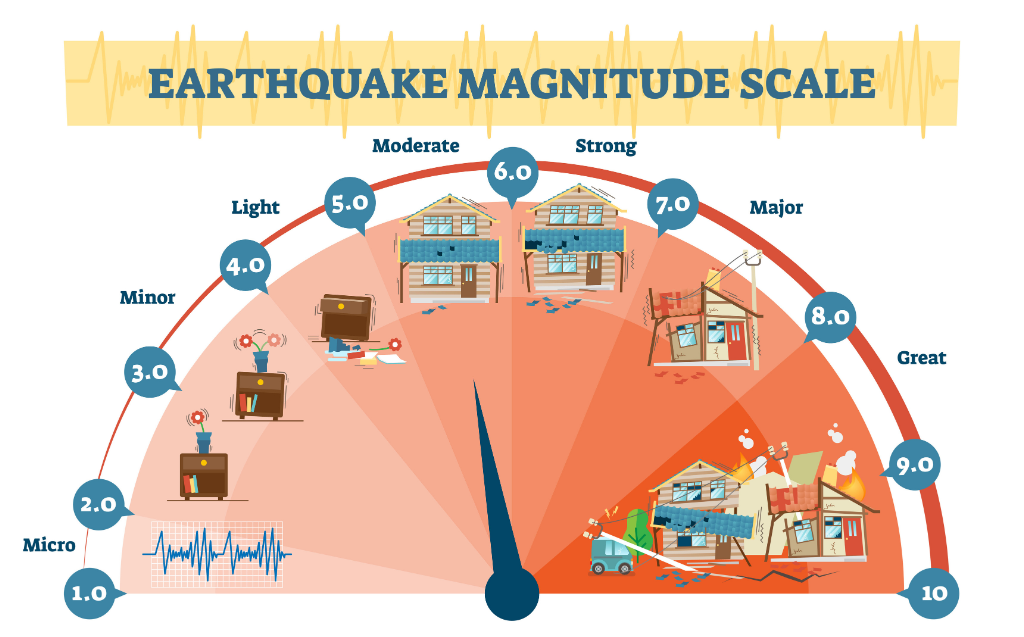What is the Richter Scale?
The Richter scale, an essential tool for measuring the magnitude of earthquakes, has been fundamental in understanding the power and destructive capabilities of these natural events. Developed in 1935 by Charles F. Richter and Beno Gutenberg, this scale has since been the cornerstone of seismology, helping both scientists and the public make sense of earthquakes. In this blog, we will delve into the history of the Richter scale, its development, and its significance in the world of seismology.
The Beginnings: Charles F. Richter and Beno Gutenberg
Charles Francis Richter (1900-1985) was an American seismologist who, along with his German colleague Beno Gutenberg (1889-1960), developed the Richter scale. Richter was born in Ohio and studied at Stanford University, where he developed an interest in seismology. After completing his studies, he worked at the California Institute of Technology (Caltech), where he met Gutenberg, an established seismologist.
The duo’s collaboration focused on finding a way to quantify the energy released by earthquakes, aiming to create a standardized scale to measure their magnitudes. This led to the development of the Richter scale in 1935.

Development of the Richter Scale
The idea behind the Richter scale was to provide a logarithmic scale that could measure the amplitude of seismic waves produced by earthquakes. The scale ranges from 1 to 10, with each whole number representing a tenfold increase in amplitude and a thirtyfold increase in energy release.
The Richter scale measures the amplitude of seismic waves using a specific type of seismograph called the Wood-Anderson torsion seismograph. By using this scale, seismologists were able to compare the sizes of earthquakes that occurred at different times and places, allowing for better understanding and classification of these events.
Significance of the Richter Scale
The Richter scale revolutionized the field of seismology by providing a standard measurement for earthquakes. This allowed for accurate comparisons and analysis of seismic events, leading to more effective disaster preparedness and response.
As our understanding of earthquakes has grown, the Richter scale has undergone modifications and improvements. Today, the Moment Magnitude Scale (MMS) is often used as a more accurate and comprehensive alternative, as it accounts for the size of the fault that generates the earthquake, as well as the amount of slip along that fault.
Despite these advancements, the Richter scale remains an iconic symbol of earthquake measurement and continues to be widely used in media and popular culture.
Only a small percentage of homeowners at risk purchase earthquake insurance. Often, they do not understand that they have a gap in their homeowners policy when owning a home in earthquake country. Look to GeoVera earthquake insurance for comprehensive, flexible, and customizable stand-alone policies to rebuild after a major seismic event. Reach out to your insurance agent to discuss the options and see how affordable this valuable coverage can be.
